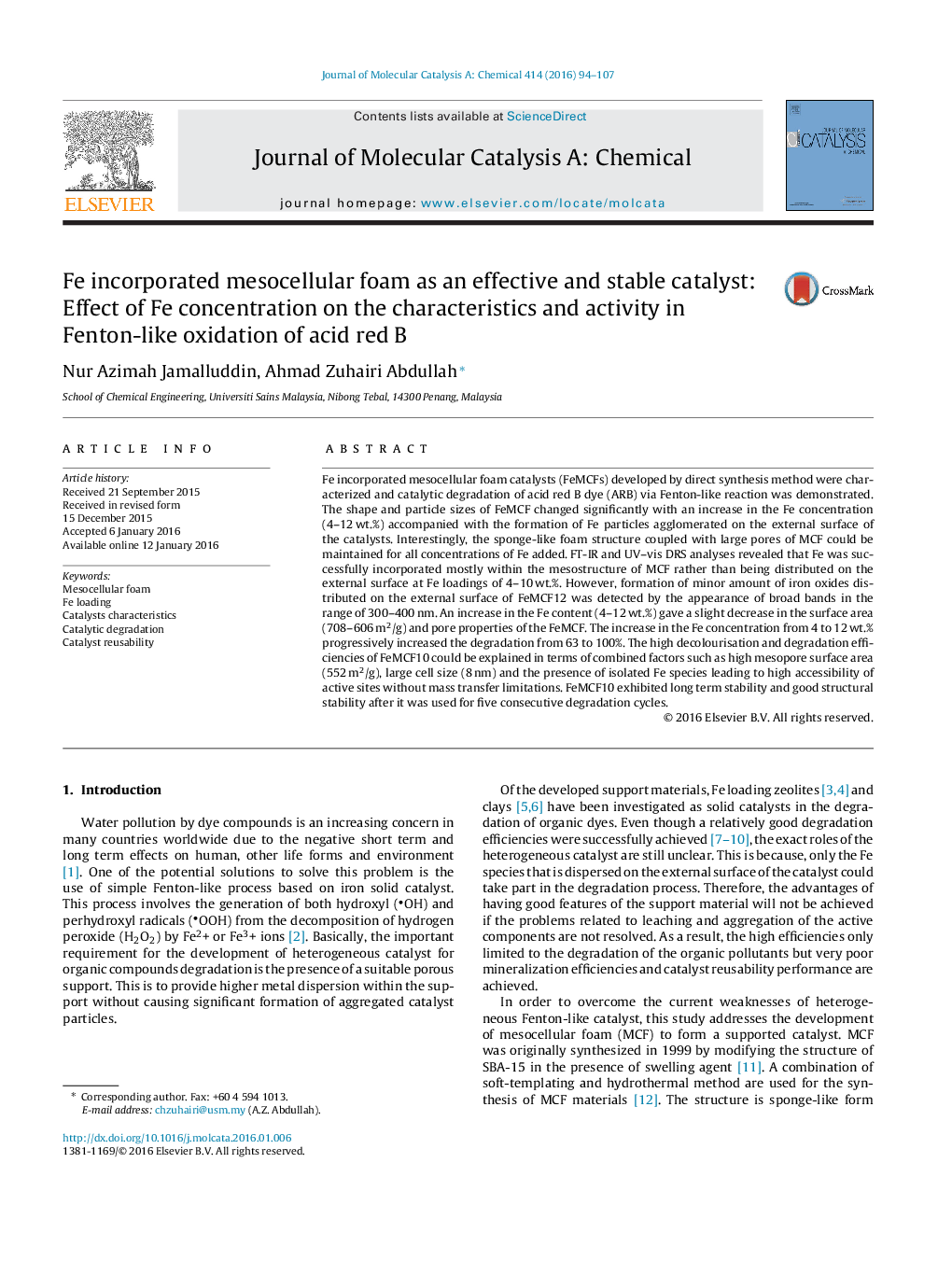| کد مقاله | کد نشریه | سال انتشار | مقاله انگلیسی | نسخه تمام متن |
|---|---|---|---|---|
| 64733 | 48368 | 2016 | 14 صفحه PDF | دانلود رایگان |

• Fe incorporation into mesocellular foam via direct synthesis method.
• Different catalyst properties with the preservation of the sponge-like structure.
• Formation of various iron species to affect the degradation of acid red B dye.
• FeMCF10 catalyst demonstrated 100% decolourization and 99% COD removal.
• Long term stability of FeMCF10 and good structural stability after five degradation cycles.
Fe incorporated mesocellular foam catalysts (FeMCFs) developed by direct synthesis method were characterized and catalytic degradation of acid red B dye (ARB) via Fenton-like reaction was demonstrated. The shape and particle sizes of FeMCF changed significantly with an increase in the Fe concentration (4–12 wt.%) accompanied with the formation of Fe particles agglomerated on the external surface of the catalysts. Interestingly, the sponge-like foam structure coupled with large pores of MCF could be maintained for all concentrations of Fe added. FT-IR and UV–vis DRS analyses revealed that Fe was successfully incorporated mostly within the mesostructure of MCF rather than being distributed on the external surface at Fe loadings of 4–10 wt.%. However, formation of minor amount of iron oxides distributed on the external surface of FeMCF12 was detected by the appearance of broad bands in the range of 300–400 nm. An increase in the Fe content (4–12 wt.%) gave a slight decrease in the surface area (708–606 m2/g) and pore properties of the FeMCF. The increase in the Fe concentration from 4 to 12 wt.% progressively increased the degradation from 63 to 100%. The high decolourisation and degradation efficiencies of FeMCF10 could be explained in terms of combined factors such as high mesopore surface area (552 m2/g), large cell size (8 nm) and the presence of isolated Fe species leading to high accessibility of active sites without mass transfer limitations. FeMCF10 exhibited long term stability and good structural stability after it was used for five consecutive degradation cycles.
Figure optionsDownload high-quality image (257 K)Download as PowerPoint slide
Journal: Journal of Molecular Catalysis A: Chemical - Volume 414, April 2016, Pages 94–107